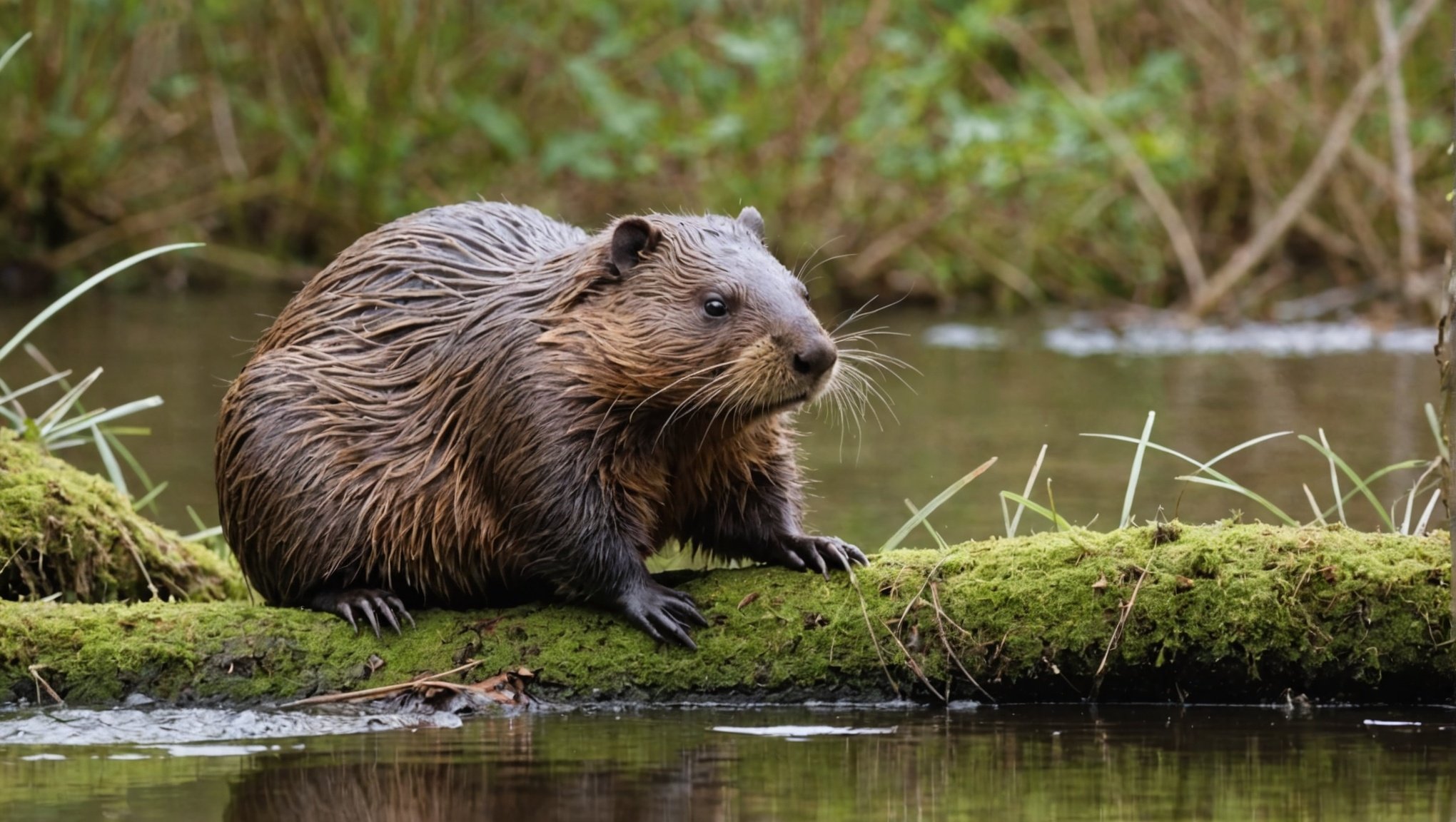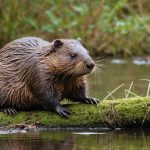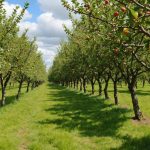Beavers, often called nature’s engineers, play an essential role in shaping the ecosystems they inhabit. Their reintroduction in the UK has sparked debates about biodiversity and ecosystem health. This initiative aims to restore river habitats, improve water quality, and enhance wildlife populations. By examining the profound effects of beaver activity on river systems, we reveal their potential benefits for local ecosystems and how their presence fosters a harmonious balance between nature and human interests. Discover what these remarkable creatures contribute to our environment.
Overview of Beaver Reintroduction in the UK
Beaver reintroduction in the UK is a fascinating example of conservation efforts aimed at restoring natural habitats. Historically, beavers were native to the UK but were hunted to extinction by the 16th century for their fur and castoreum. Their absence has significantly impacted UK ecosystems, as beavers play a crucial role in maintaining biodiversity and water management.
A lire également : The Impact of Domestic Cats on UK Wildlife: Strategies for Mitigating Their Effects
In recent years, various reintroduction initiatives have been undertaken to bring beavers back to the UK. These initiatives are part of broader conservation efforts to enhance biodiversity and improve ecosystem health. The current status of beaver populations is promising, with successful reintroduction projects in areas such as Scotland and Devon. These projects have shown positive results, with beavers contributing to natural flood management and creating habitats that support other wildlife.
The success of these initiatives relies heavily on community involvement and scientific research. By understanding the historical context and current status of beaver populations, conservationists can develop strategies that benefit both the environment and local communities. Reintroducing beavers is not just about restoring a species but also about revitalising UK ecosystems, demonstrating the potential of well-planned conservation efforts.
En parallèle : Engaging UK Citizens: A Guide to Participating in Wildlife Conservation through Citizen Science
Ecological Impacts of Beaver Activities
Beavers are remarkable engineers, profoundly influencing beaver ecology through their habitat modifications. These industrious creatures create wetlands by constructing dams, which can significantly alter riverbanks. This transformation not only provides new habitats for a variety of species but also enhances ecosystem services.
One of the key impacts of beaver activity is on water quality and sedimentation. By slowing down water flow, beaver dams help trap sediments and filter pollutants, leading to cleaner water downstream. This natural filtration process is essential in maintaining healthy aquatic ecosystems.
Moreover, beavers play a crucial role in flood mitigation. Their dams act as natural barriers, reducing the speed and volume of water flow during heavy rains. This can help prevent flooding in nearby areas, offering a sustainable solution to flood management.
The presence of beavers also boosts biodiversity. Their habitat modifications create diverse environments that support a wide range of plant and animal species. Wetlands formed by beaver activity become thriving ecosystems, attracting birds, amphibians, and insects, thus enhancing the overall biodiversity of the area.
In summary, beavers contribute significantly to habitat modification and provide vital ecosystem services that benefit both the environment and human communities.
Benefits to Biodiversity
Beaver reintroduction has had a profound impact on biodiversity across various ecosystems in the UK. By creating wetlands, beavers increase habitat availability for both aquatic and terrestrial species. These new habitats support diverse species interactions, enhancing ecosystem health.
The effects on plant communities are notable. Beaver activities promote the growth of water-loving plants, which thrive in the wetlands they create. This increased vegetation supports a variety of herbivores and, consequently, the predators that feed on them. Additionally, the accumulation of organic matter from decaying plants improves soil health, enriching it with nutrients.
Several case studies highlight the species benefiting from beaver activity. In Scotland, for example, the reintroduction of beavers has led to a rise in bird populations, such as herons and kingfishers, which rely on the enhanced aquatic environments. Amphibians like frogs and newts also flourish in these newly formed wetlands, taking advantage of the abundant resources.
- Increased habitat availability: Supports both aquatic and terrestrial life.
- Effects on plant communities: Boosts growth of diverse plant species.
- Case studies: Documented rise in bird and amphibian populations.
Through these changes, beavers play a crucial role in enriching biodiversity and supporting robust ecosystems.
Challenges of Beaver Reintroduction
Reintroducing beavers in the UK presents several ecological challenges and complexities in beaver management. One primary concern is the potential for human-wildlife conflict, especially regarding agriculture and land use. Beavers can alter landscapes significantly, sometimes leading to flooding in agricultural areas or damage to crops, causing tension between conservation efforts and farming interests.
To address these issues, effective management strategies are essential. These strategies often involve creating buffer zones around beaver habitats to protect farmland and implementing water management techniques to control flooding. Additionally, engaging with local communities and stakeholders is crucial in developing solutions that balance ecological benefits with economic concerns.
Public perceptions and misconceptions about beavers can also pose challenges. Some people may view beavers as pests due to their dam-building activities, while others may underestimate their ecological importance. Education and awareness campaigns can help shift these perceptions, highlighting the beavers’ role in enhancing biodiversity and providing ecosystem services.
By understanding and addressing these challenges, it is possible to foster a harmonious coexistence between humans and beavers, ensuring the success of reintroduction efforts.
Interactions with Other Species
Beavers are pivotal in shaping ecosystem interactions and influencing species relationships within their habitats. Their activities create dynamic environments that foster intricate food web dynamics.
Beaver ponds serve as a hub for various species, enhancing symbiotic relationships. For instance, fish benefit from the increased water depth and cooler temperatures, while birds find ample nesting sites. These ponds also attract insects, providing a rich food source for amphibians and birds.
Beavers indirectly support predators by increasing prey availability. The diverse habitats they create lead to an abundance of small mammals, amphibians, and fish, which in turn attract predators like otters and herons. This boost in prey populations enriches the entire food web.
However, beavers also engage in competitive interactions. They compete with other herbivores for resources, influencing plant community dynamics. Despite this, their overall impact is positive, as they maintain healthy ecosystems by promoting biodiversity and ecological balance.
In summary, beavers are essential for nurturing complex relationships among species, supporting both predator and prey dynamics, and contributing to the resilience of ecosystems.
Scientific Studies and Findings
Recent research studies have extensively examined the impact of beavers on UK ecosystems. These ecological research efforts have revealed the significant role beavers play in enhancing biodiversity and ecosystem functions. One notable study highlighted that beaver activities, such as dam-building, can increase wetland areas by up to 13%, providing critical habitats for various species.
Beaver impact studies have also demonstrated improvements in water quality. By trapping sediments and pollutants, beaver dams contribute to cleaner waterways. This has implications for both wildlife and human communities, as improved water quality supports diverse aquatic life and reduces water treatment costs.
Experts recommend incorporating beaver reintroduction into broader conservation plans. They argue that the ecological benefits outweigh potential challenges, such as human-wildlife conflicts. By promoting ecological research, policymakers can develop strategies that harness the positive effects of beavers while mitigating any negative impacts.
- Increased wetland areas: Key to supporting diverse habitats.
- Water quality improvements: Result from natural filtration processes.
- Expert recommendations: Emphasise balanced conservation approaches.
In summary, scientific studies affirm that beavers are vital to ecological restoration, offering solutions to enhance biodiversity and ecosystem resilience.
Conservation Policies and Future Outlook
The reintroduction of beavers in the UK is guided by robust conservation policies aimed at balancing ecological benefits with societal needs. Current policies focus on sustainable beaver management, ensuring that these animals positively impact ecosystems without causing undue disruption to human activities.
Beaver management strategies include creating designated areas where beavers can thrive, while also employing measures to mitigate potential conflicts with landowners. These strategies are essential for maintaining harmony between beavers and human interests, particularly in agricultural regions.
Looking ahead, the future of ecosystems in the UK will likely see an expansion of beaver populations, as conservation policies evolve to incorporate new scientific findings and public feedback. Policymakers are exploring adaptive management techniques that allow for flexibility in response to changing environmental conditions and community needs.
Public engagement and education play a pivotal role in the success of these conservation efforts. By fostering a deeper understanding of beaver ecology and the benefits they bring, communities can become active participants in conservation initiatives. This collaborative approach not only supports the future of ecosystems but also ensures that conservation policies remain relevant and effective.
















